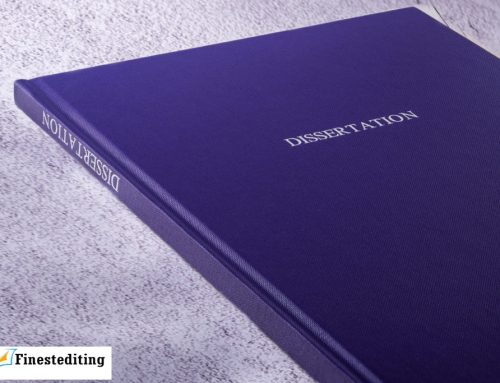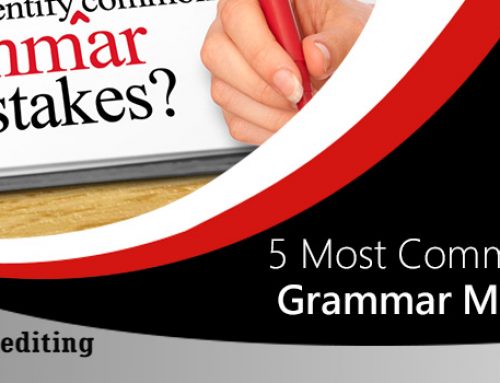Ever since your school days, you might’ve heard teachers and instructors yelling at students to maintain proper punctuation. Any punctuation error in your papers and assignments were overinflated and presented as being far more significant than they actually were. In this situation, the only thing that needs to be done is to take that criticism constructively and learn from it. Punctuation is one of the basic tenets of the English language, and any piece written by you needs to have perfect grammar to be understandable, and most importantly, valid.
Grammar is a core part of effective writing and is one of the biggest headaches for proofreaders and editors. Despite their vital importance, many writers frequently veer off course and end up making a few mistakes of this type. Although these are easy to fix, you must keep in mind that punctuation has the power to completely change the meaning and context of a written sentence. In any case, that is absolutely unacceptable, regardless of the kind of article is written. It is impossible to avoid punctuating a sentence, so the best course of action is to learn this tricky task.
Depending on the sentence, there will be a handful of punctuation marks working in unison to add some sense into it. In an extremely simplified sense, punctuation allows your brain to understand the meaning of a sentence by breaking it into pieces. It’s kind of like chewing food, but we’re talking about sentences here, not tasty food. Now, this doesn’t mean you can simply put a punctuation mark anywhere in a sentence. There is a series of rules and conventions that need to be followed to the dot, especially if you wish to provide Business Editing Services.
We could simply list punctuation marks here and let you do the thinking, but that wouldn’t really solve the main issue at hand. For that, you can scroll down and see the punctuation marks themselves, alongside their descriptions and use cases.
Full Stops (Periods)
Full stops or periods are some of the most common punctuation marks anyone would use. Being the most versatile punctuation mark, a period can be used to conclude sentences, as well as indicate the decimal mark while writing numbers. Alternatively, the full stop is also used to separate names, as in initials, and be used for separating dates and other data. Its prevalence cannot be taken lightly, as an improperly placed full stop can make or break your sentence. Although it might seem inconsequential, the importance of a full stop cannot be emphasized enough.
In the case of abbreviations, the full stop must be used for those having lowercase letters. Abbreviations such as Mr. and Mrs. need to be accompanied by a full stop, while those written with al uppercase letters, such as NASA, USA and FBI do not need a period before, after or between them. You do, however, need a period between certain academic degrees and country names. Terms such as D.D.S for doctor of dental surgery, and U.S for United States.
Question Mark (?)
Just as the name suggests, the question mark is supposed to be at the end of a question or query. Although there are different types of questions, a question mark will only be used in the case of direct questions, as indirect questions will be ending with a simple full stop. As mentioned above, direct questions will be ending with a question mark, and that also applies for questions that appear in sentences. What would normally be placed with a comma, a question in a sentence would be indicated by a question mark as soon as the question ends. For instance; Would he be coming for dinner? she thought. In the sentence mentioned, the word she is written with lowercase alphabets, as it is continuing the sentence rather than starting a new one. There isn’t really any distinction in the presence of question marks as the end of a sentence, other than the context of course.
Exclamation Mark (!)
One of the more descriptive punctuation marks, the exclamation is among the most independent symbols a writer can use. There isn’t really a concrete set of rules that governs the usage of exclamation marks, and that is a great advantage for any writers. In any case, you might have come across authors using exclamation points in interesting ways. For the most part, the magnitude of surprise is usually shown by the number of exclamation marks. Similarly, the points are used in conjunction with question marks to indicate a question brought about by surprise.
In formal kinds of writing, the exclamation mark is mostly avoided. This is done to ensure a neutral tone, although there is nothing wrong with using exclamation points if it is a part of the topic or title. Ideally, exclamation points shouldn’t be overused, as that causes them to lose value quickly. Only moments of great surprise and shock must be indicated with points, even though you are free to use it to show arguments and loud conversations.
Comma
Perhaps the most expansive of punctuation marks, commas are among the most versatile punctuation marks out there. Commas are used to signify a pause, list, highlight importance, connect sentences, add information and the list goes on. Due to their vast number of use cases, it is possible to write a complete article on commas itself. However, for brevity’s sake, you will only find some of its most important uses below.
Commas can be divided into a variety of different types:
Pausing commas
Commas used to indicate a pause are a lot like full stops in some ways. While periods indicate the end of a sentence, a pausing coma can be used to show a change in tone. Although it wouldn’t be apparent in writing, if a sentence with a pausing comma were to be read out aloud, the comma would be pronounced with a short pause.
Listing commas
These commas are frequently used to separate words and individual clauses. In short, a listing comma is used in the place of and’s and or’s. Where normally you would list things by using the word and as a separator, the listing comma takes its place, allowing your sentence to look a lot more concise, without the need for additional words. It also allows you to list down a series of words, without having to add a table or create a separate list.
Connecting comma
A connecting comma is used to join two sentences into a single one. Now, you might be wondering that is it really necessary to join two sentences into one, and that is a valid query. In the course of your proofreading, you might come two sentences that sound a little off. They have a robotic feel to them and read quite boringly too. This can be improved by joining the sentences with a comma and rearranging the words to fit in better. A joining comma is a great way to improve the flow of a paper, but you do need to use it in moderation.
The list above isn’t exhaustive though. Punctuation marks such as apostrophes, colons, semicolons, ellipses, quotation marks and brackets are highly detailed and require their own articles. Be on the lookout for a continuation, and use that time to exercise your proofreading muscles.








Leave A Comment